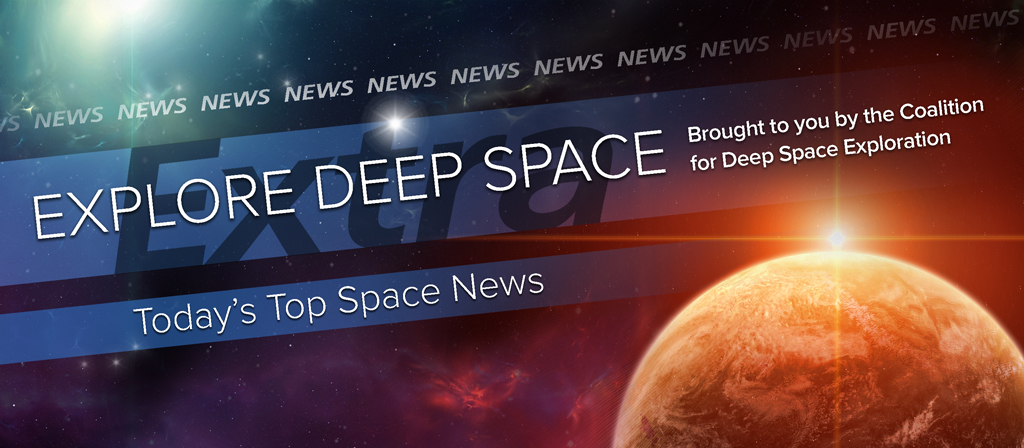In Today’s Deep Space Extra… Human deep space exploration will include physical and mental challenges.
Human Deep Space Exploration
The human spaceflight equation
The Space Review (7/18): Humans, some more than others, are driven by a desire to explore, writes Eric Hedman, CTO of Logic Design. This instinct will take us to the moon or Mars, possibly to settle one or both, he writes. Hedman suggests a strategy that establishes a base first to investigate the potentially significant physical consequences of the lower gravity on either destination. The effects of six-month human missions on the moon could be compared to those of missions of similar duration aboard the International Space Station, he suggests.
What happens after a year in space?
The Space Review (7/18): Scott Kelly, the now-retired NASA astronaut who returned to Earth on Mar. 1 after a U.S. record-setting 340 days in space aboard the International Space Station, discussed his experiences last week before the International Space Station Research and Development conference in San Diego. Scott was joined by his twin brother, Mark Kelly, also a retired NASA astronaut and naval aviator. The two men are the focus of research intended to reveal genetic consequences of long space flight. Scott Kelly noted the physical effects of re-adapting to gravity upon his return, a process that is still underway, notes essayist Jeff Foust. The space marathoner characterized the work pace as mentally demanding as was accepting the constant risk of equipment failure or a debris impact. Then, there was the isolation from family and friends and inability to come to their aid in a crisis. NASA and Russia initiated the long mission that included cosmonaut Mikhail Kornienko to learn more about the challenges of future human deep space exploration.
How the Columbia tragedy shifted NASA’s sights to the Moon
Huffington Post (7/18): The catalyst for NASA’s Journey to Mars may have been the fatal loss of the shuttle Columbia on Feb. 1, 2003. The tragedy prompted the Bush Administration to announce Constellation, an effort to establish a human lunar base with a new heavy lift rocket and crew vehicle as a step toward a new era of deep space exploration. Constellation was cancelled by Bush’s successor. But Congress pursued development of the Space Launch System exploration rocket and Orion crew capsule. Both are cornerstones of NASA’s Journey to Mars, a strategy presented by the Obama administration to reach the red planet with human explorers in the mid-2030s.
Space Science
2 new found alien planets may be capable of supporting life
Space.com (7/18): Four rocky planets, two of them possibly capable of supporting life, have been found orbiting K2-72, a red dwarf star 181 light years from the Earth. All four are among 104 recent discoveries by NASA’s Kepler space telescope during its second mission phase.
COSPAR cancels space science conference after Turkish coup attempt
Space News (7/18): The recent military coup attempt in Turkey has prompted cancellation of the week-long Committee on Space Research, COSPAR, and biannual Scientific Assembly planned for July 30 in Istanbul. The attempt has left the government of Turkey too unstable for the week-long session, according to the organization. The U.S. State Department issued a travel advisory prior to the coup attempt and NASA announced it would not pay travel expenses for civil servants and contractors on June 21.
Why did NASA send a DNA sequencer to space?
CNET (7/18): Launched early Monday from Cape Canaveral, Fla., NASA’s latest commercial re-supply mission to the International Space Station includes a portable DNA sequencer among its 5,000-pound cargo. Astronaut Kate Rubins plans to demonstrate the device using nonpathogenic bacteria and viruses and mouse specimens. Someday, DNA sequencing may help experts better monitor the health of astronauts and perhaps even identify DNA-based life elsewhere in the universe.
Nearby supernovae could have affected life on Earth
Physics World (7/18): Nearby stellar explosions influenced the terrestrial environment, including the way life emerged, according to a study led by a Washburn University researcher and published in the Astrophysical Journal Letters.
Low Earth Orbit
Robotic Russian supply ship arrives at Space Station
Space.com (7/18): Russia’s Progress MS-03 cargo capsule, also designated Progress 64, successfully docked with the six-person International Space Station late Monday, delivering 5,800 pounds of crew supplies, propellant and space hardware.
Twitter lights up with 95th birthday wishes for John Glenn
Associated Press via New York Times (7/18): Mercury astronaut John Glenn marked his 95th birthday on Monday. The Marine Corps aviator became the first American to orbit the Earth on Feb. 20, 1962. Following a business and a political career in the U.S. Senate, Glenn returned to orbit in 1998 as a crew member aboard the space shuttle Discovery. He joined the shuttle crew for seven days in orbit.
SpaceX takes Houston company’s ship-tracking tech into space
Houston Chronicle (7/18): Launched early Monday, the latest NASA contracted re-supply mission to the International Space Station includes a research and development project, Global AIS on Space Station. GLASS was put together by Houston-based JAMSS America to track global maritime traffic, improving safety at sea. GLASS is an alternative to a stand-alone satellite.
Commercial to Low Earth Orbit
Blue Origin and SpaceX vets raise cash for Relativity Space, a stealthy startup aiming to build rockets ‘with zero human labor’
Geek Wire (7/18): Startup Relativity Space believes it can build orbital launch vehicles without human labor. Company officials are declining comment beyond material provided in SEC filings, according to the report.
Intelligence agencies announce new cooperation on commercial imagery
Space News (7/17): Commercial GEOINT Activity is a new collaboration between the U.S. National Geospatial-Intelligence Agency and the National Reconnaissance Office for the purchase and analysis of commercial satellite imagery. The collaboration agreement was announced July 15. It was made possible by a growing commercial space industry, according to representatives from the two federal intelligence agencies.

